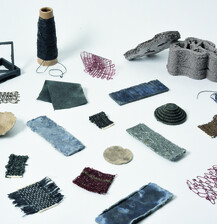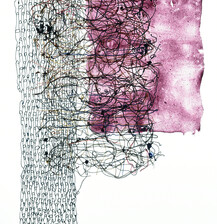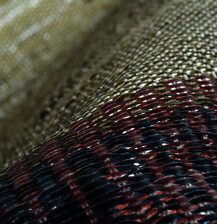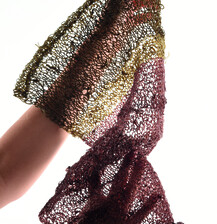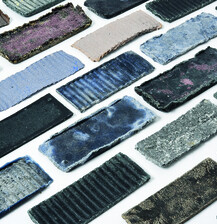Sommersemester 2019,
FECAL MATTERS - Gebrauchtes Toilettenpapier als neues Material
Kann ein Material, das die Toilette hinuntergespült wurde, zu einem Designobjekt werden?
Fecal Matters untersucht Gestaltungspotentiale und mögliche Anwendungsbereiche wiedergewonnener Zellulose. Kann ein Material, das die Toilette hinuntergespült wurde, zu einem Designobjekt werden? Kann es als als Kleidung am Körper getragen, sogar als Essgeschirr genutzt werden? Fecal Matters stellt Fragen nach persönlichen Gewohnheiten und dem gesellschaftlichen Kontext. Durch seine kulturelle Konnotation, seine Herkunft und seine ursprüngliche Nutzung wird das Material negativ beurteilt. Was sind die Grenzen einer Interaktion mit gebrauchten Hygieneprodukten? Wo liegt die Schwelle zum Ekel und inwiefern kann sie durch Gestaltung verschoben werden? Durch eine Kommunikations- und Designstrategie regt das Projekt zu einer offenen Wahrnehmung von Abfallprodukten und neuen Materialien an. Gleichzeitig informiert es über den ökologischen Fußabdruck von Toilettenpapier.
EN
Can a material that has been flushed down the toilet become a design object?
Fecal Matters is an in-depth material research, a project looking into design potentials and possible applications for recovered cellulose. Can a material, which was discarded by flushing it down the drain, become a representative design object? Can it be worn on the skin as a textile? Or can it be used as a dish to eat from?
Thus Fecal Matters poses societal and habitual questions. Due to its cultural connotation this material is extremely judged by its origin and initial use. What are the human boundaries interacting with a used hygiene product, what are our limits of disgust and how could they be shifted by design? The project creates a communication and a design strategy to make people react openly to a new material. It informs about the importance of the ecological footprint regarding the production and consumption of toilet paper.
Betreuung:
Prof. Dr. Zane Berzina, Prof. Susanne Schwarz-Raacke, Prof. Barbara Schmidt, Prof. Dr. Lucy Norris, Essi Glomb, Julia Wolf, Veronika Aumann
In Kooperation mit: Cellvation B.V. / CirTec BV
Projektmitglieder: Lobke Beckfeld, Elisabetta Goltermann, Nicholas Plunkett, Melissa Kramer (University of Applied Sciences Potsdam)
